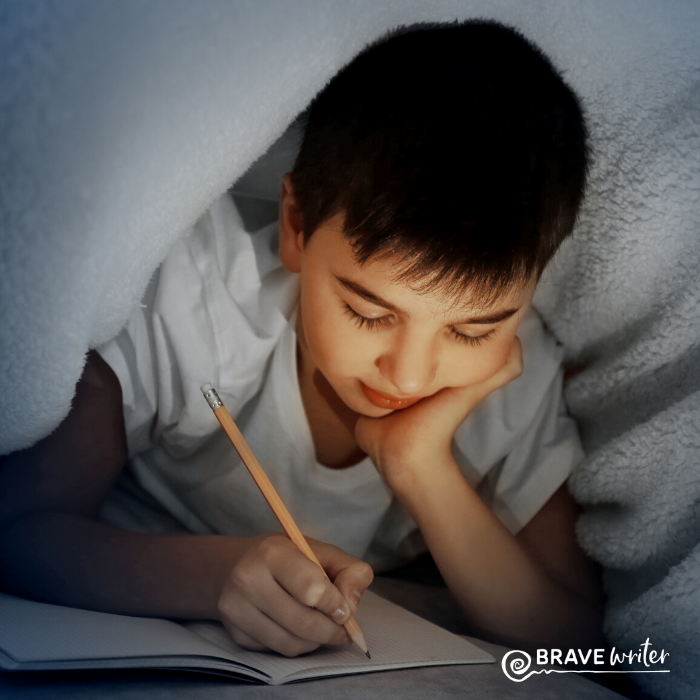Emotional Safety and Writing Risks

Some writing programs don’t address the key condition needed to take writing risks: emotional safety.
That’s why writing a diary or a journal has been popular for centuries. The tradition of daily writing away from readers allows people to:
- discover their own thoughts,
- externalize their feelings,
- process what happens to them.
In our “educator” hunger to create writers of our children, sometimes we skip the step that allows them to write without our prying eyes.
One way to grow brave writers, then, is to create a weekly writing routine where you and your children freely write, knowing no one will read the writing—a completely protected space that gives your kids a chance to risk externalizing their thoughts without fear of criticism—whether “silly poop jokes” or rebellious thoughts about homeschool or their sensitivity to a social issue.
When a child expects writing to be read by a parent, a child likely self-edits while writing. Access to an original thought, particularly one that carries risk, is shuttered. That’s why sometimes you’ll ask a child to write what they just said aloud to you, and suddenly the mind goes blank. Your child tells you: “I can’t think of anything to say.” Because now instead of freely expressing, the child knows the thought will be evaluated for spelling, handwriting, punctuation, and even meaning.
To overcome that challenge, make room for your kids to say, “I wrote but I would prefer to keep it private.” What a gift that is!
Honor the growing writer by valuing the privacy of that child’s mind life first. Allow writing to emerge that is not read, not evaluated, but that creates space for it to become the writer’s own possession.
For more information about freewriting, check this post on Brave Writer’s website.

















